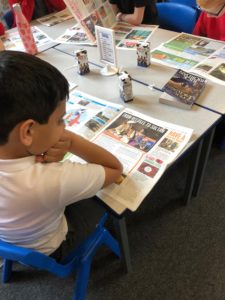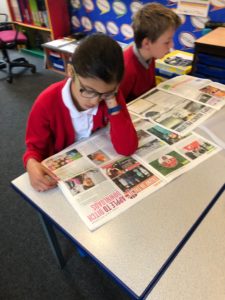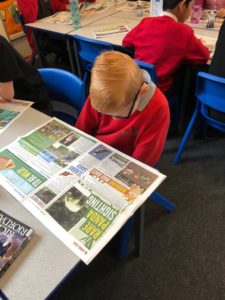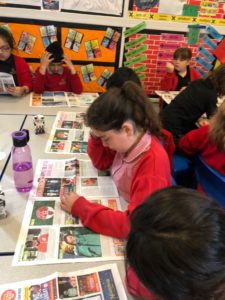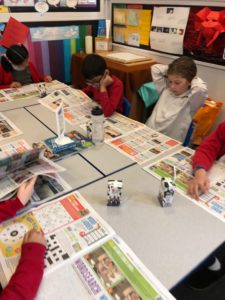Numbers to 100
In Year One, we’ve been learning about numbers to 100. The children must be able to count to and across 100 forwards and backwards, starting from from any number.
The children worked together to compete a 100 square jigsaw. The 100 square is a helpful resource in Year One when we are learning about place value.
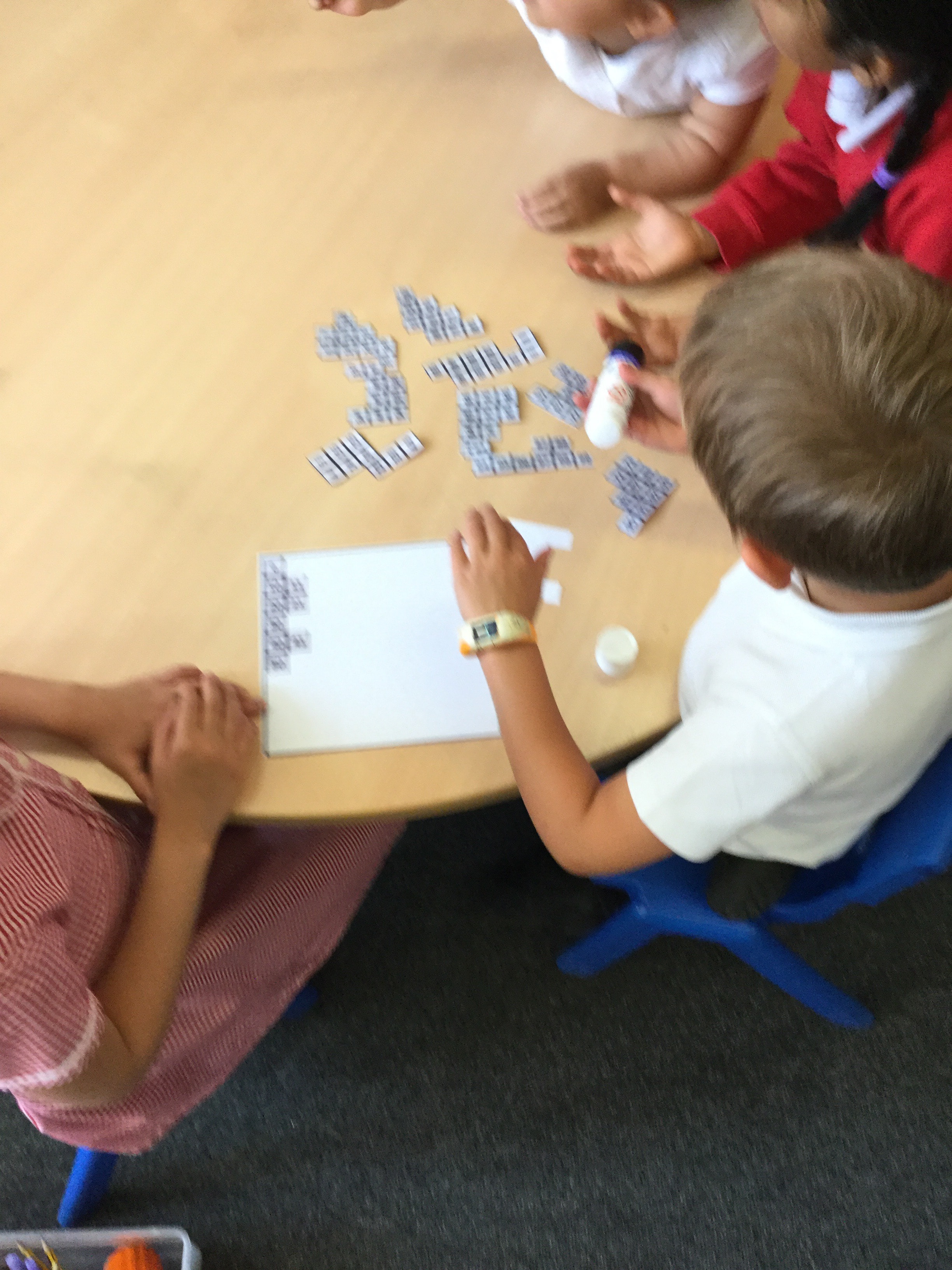

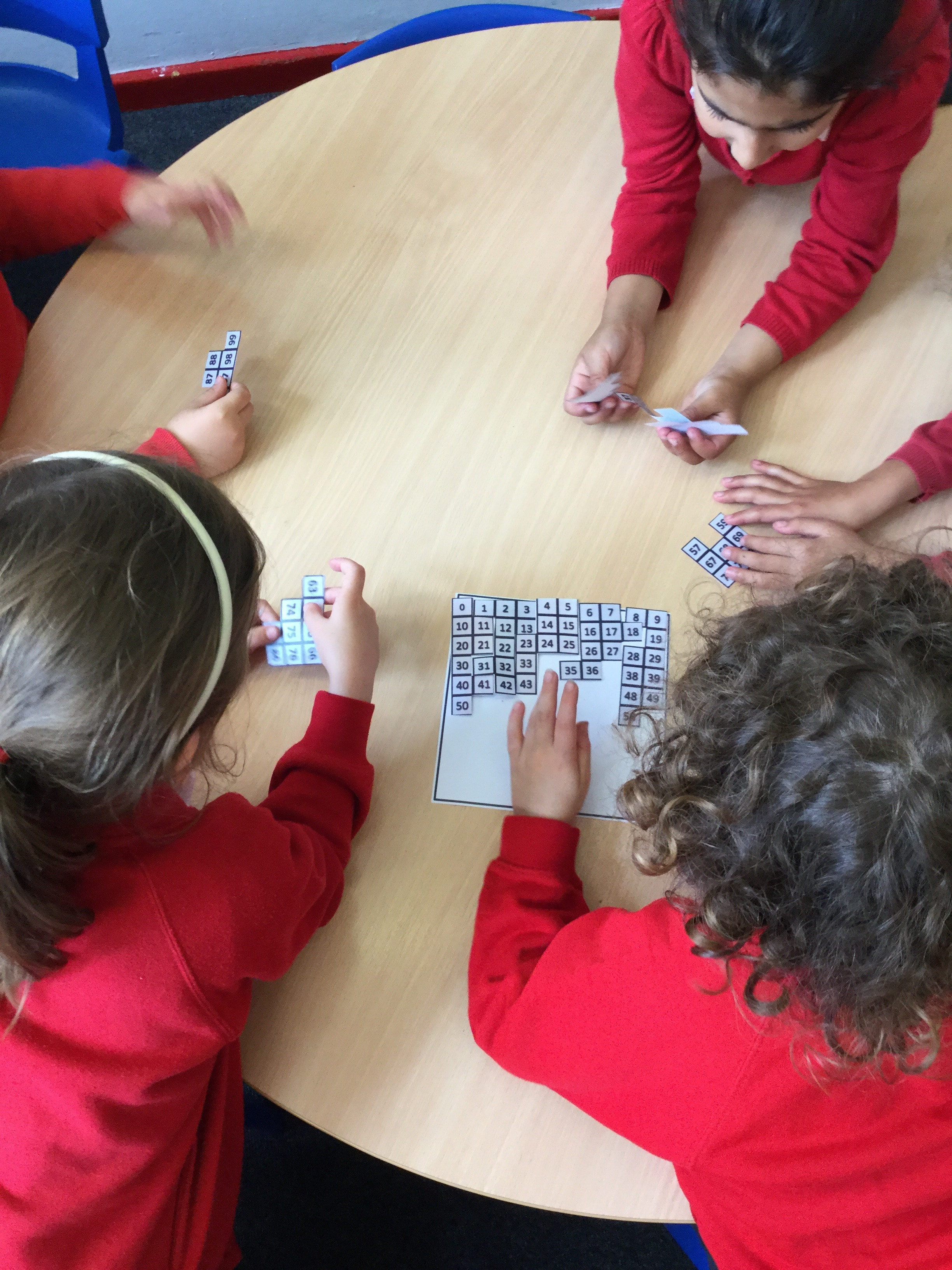
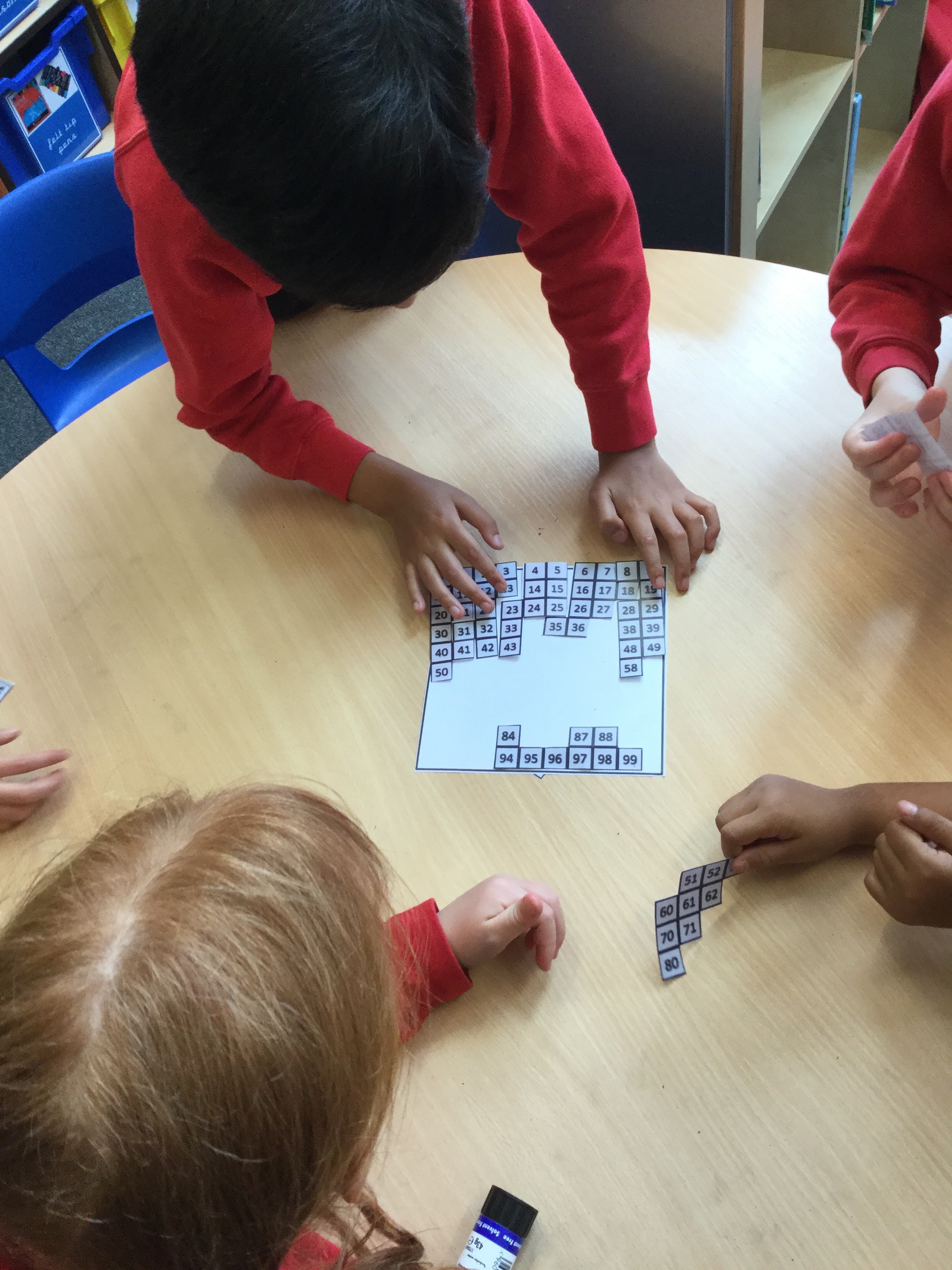
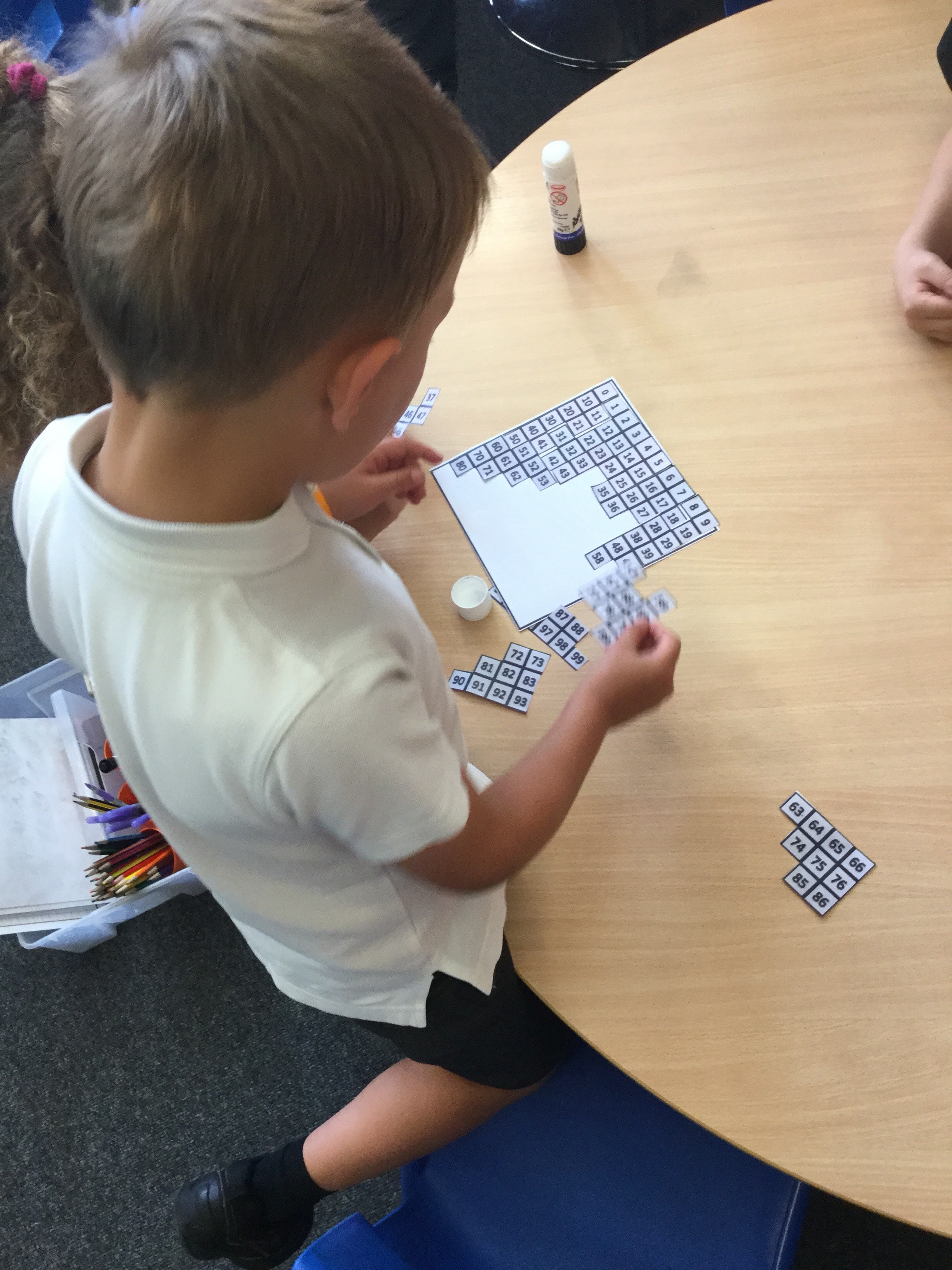
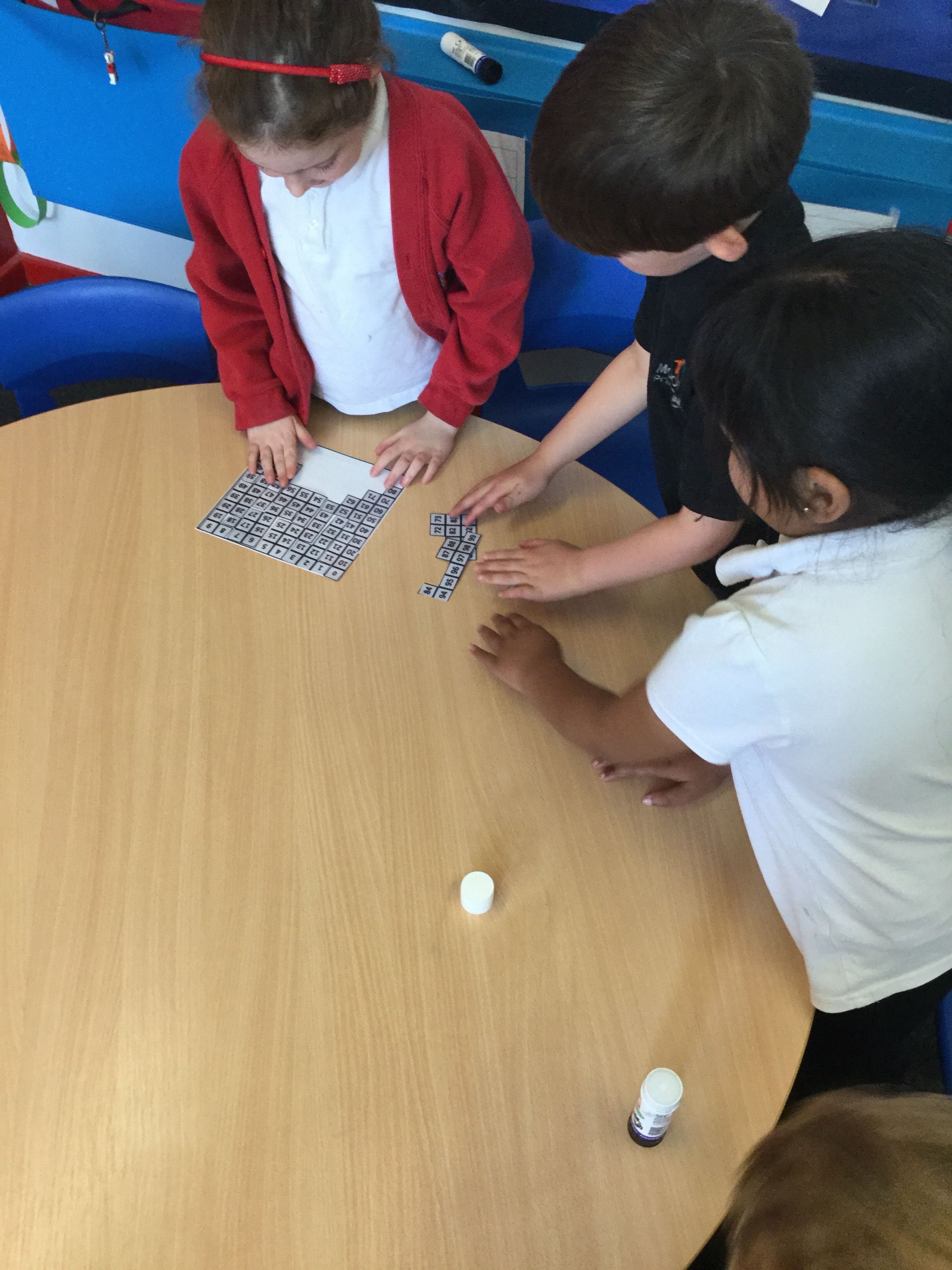
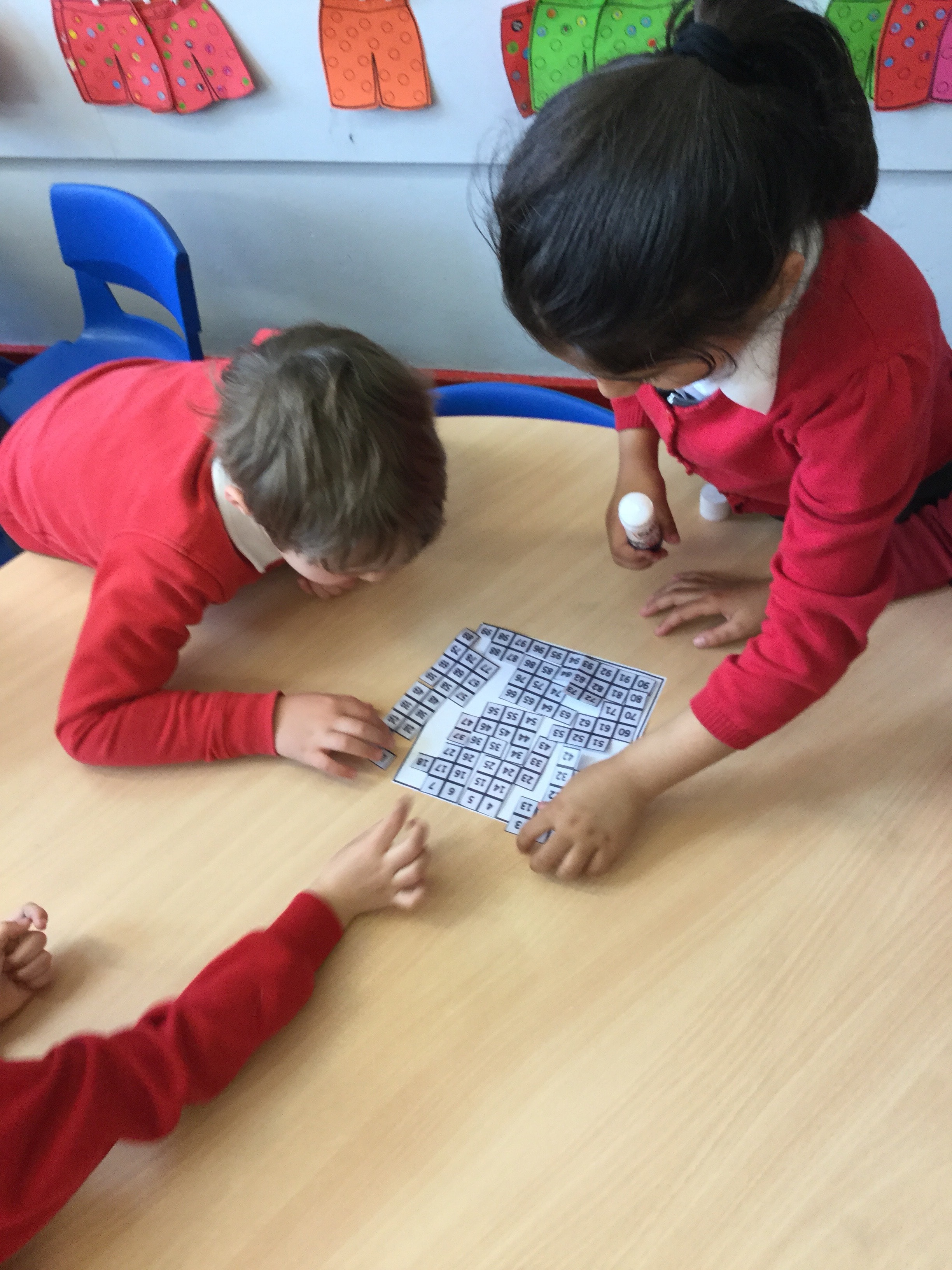
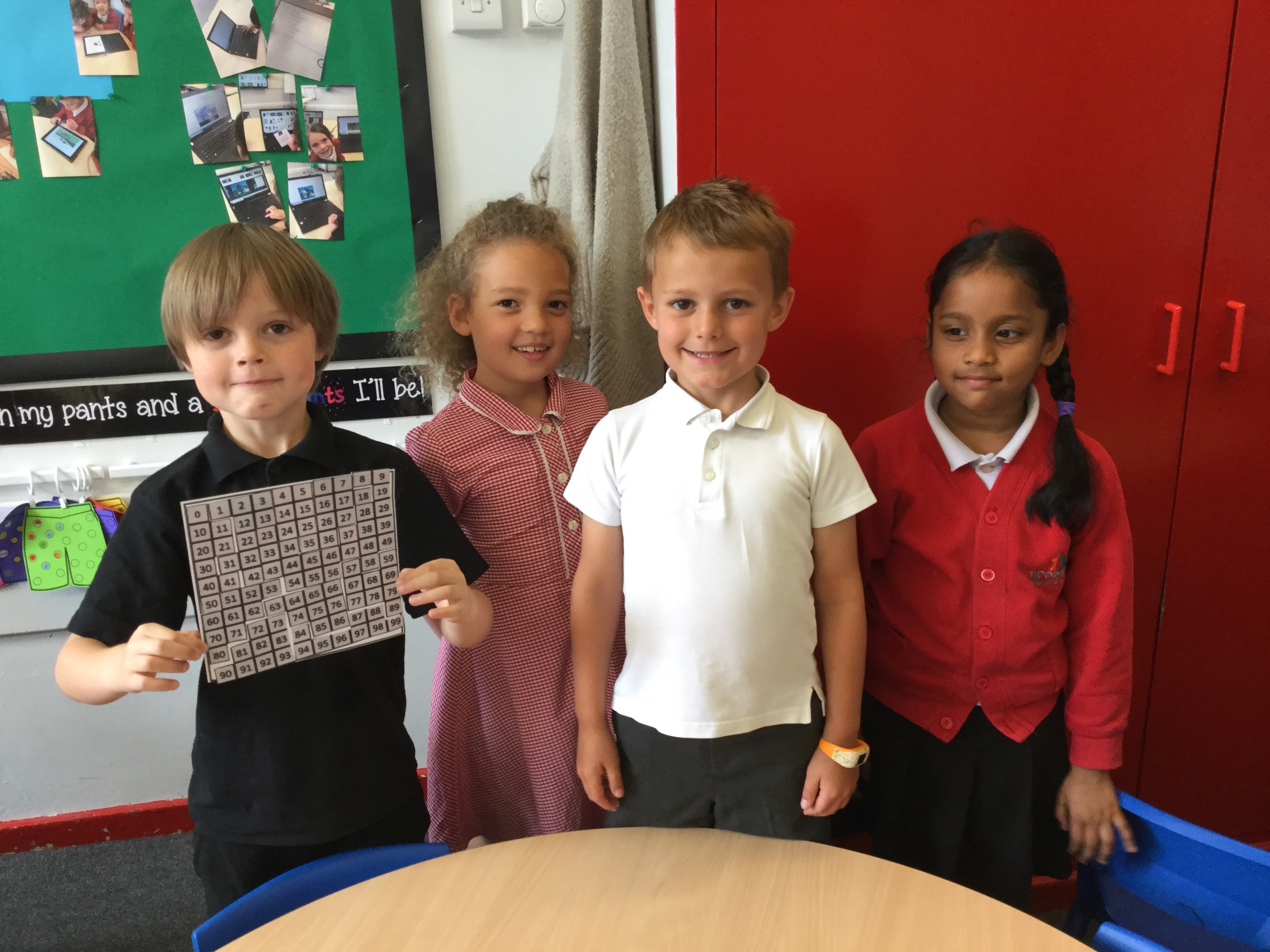
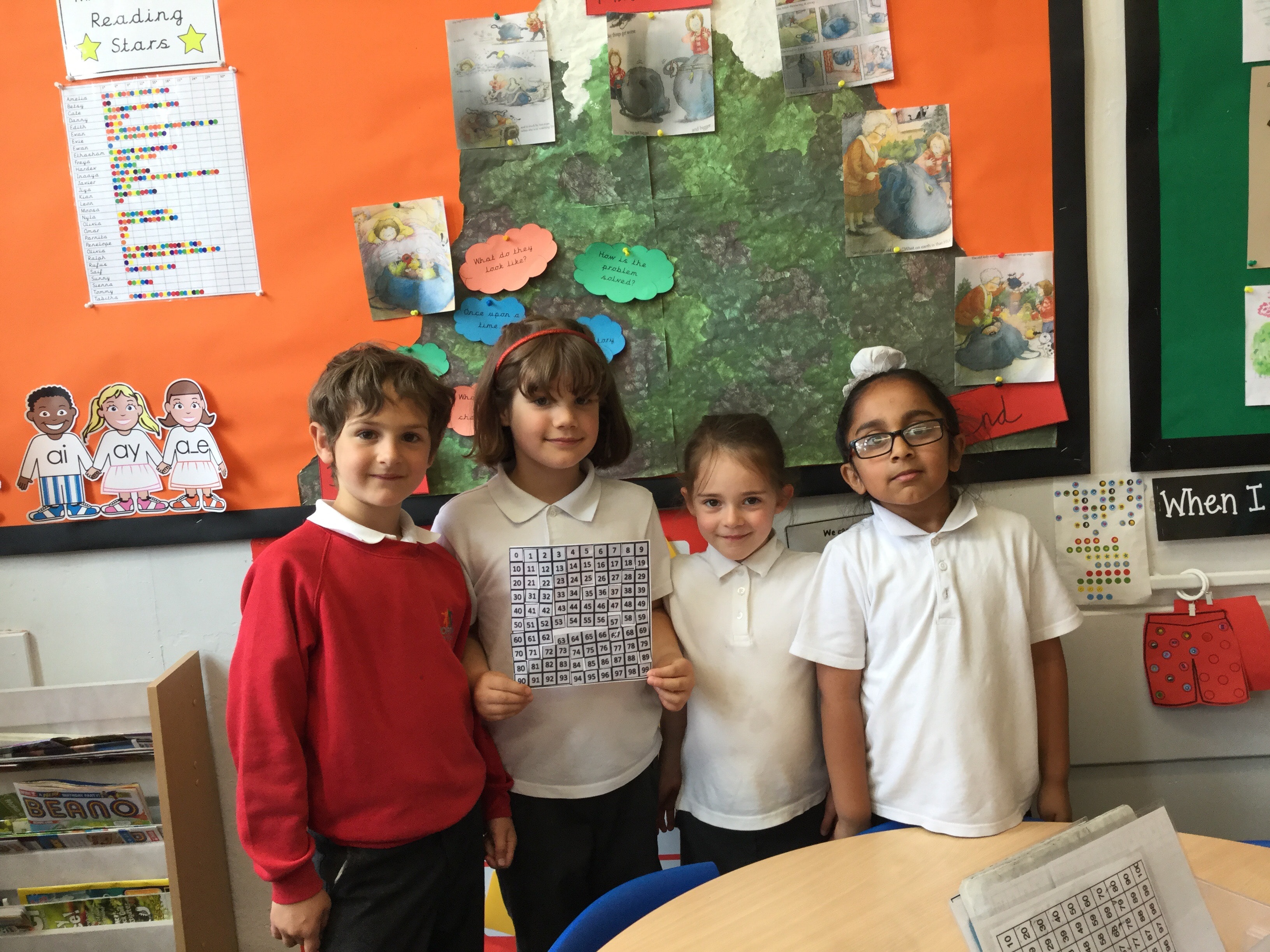
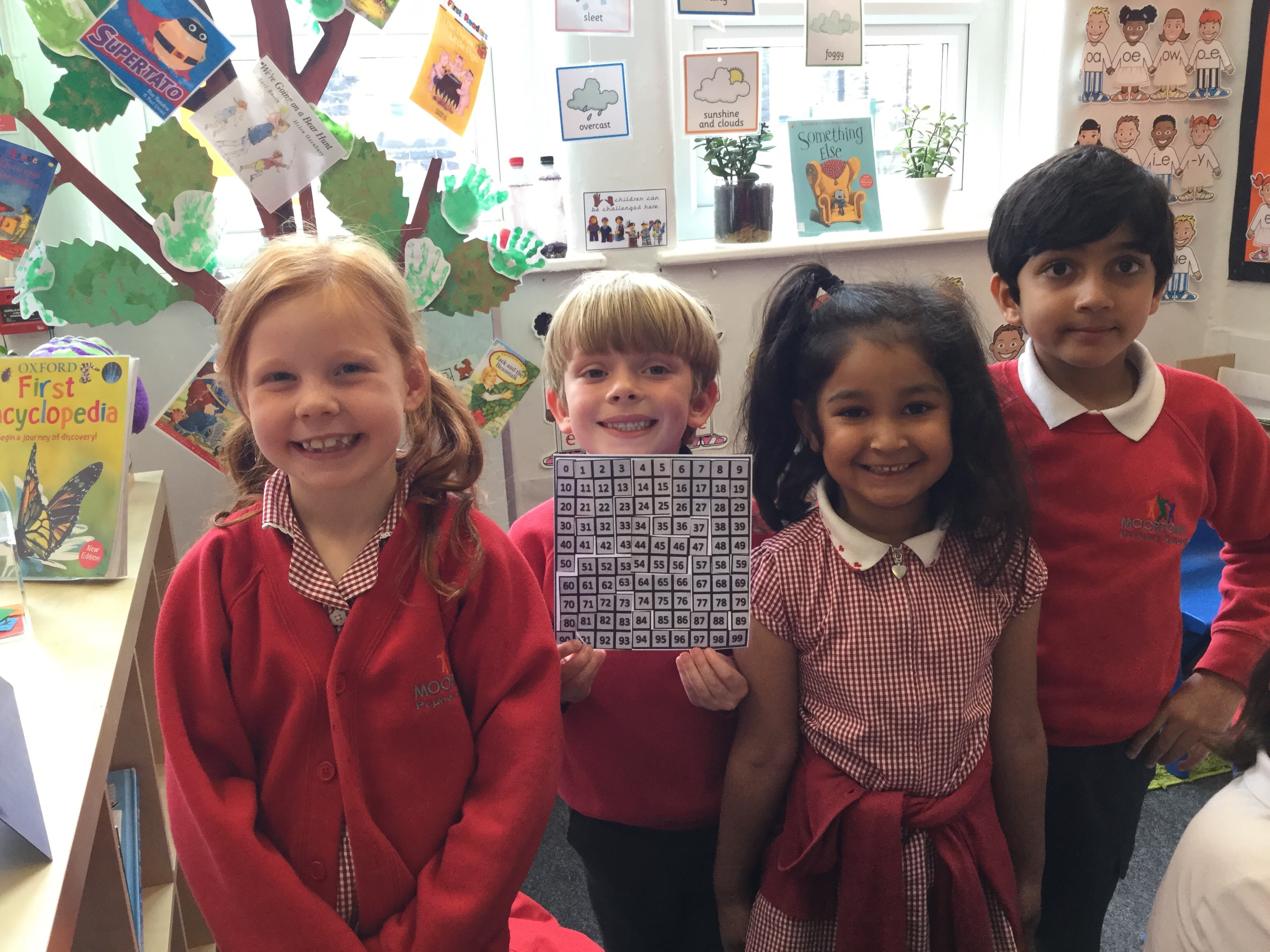
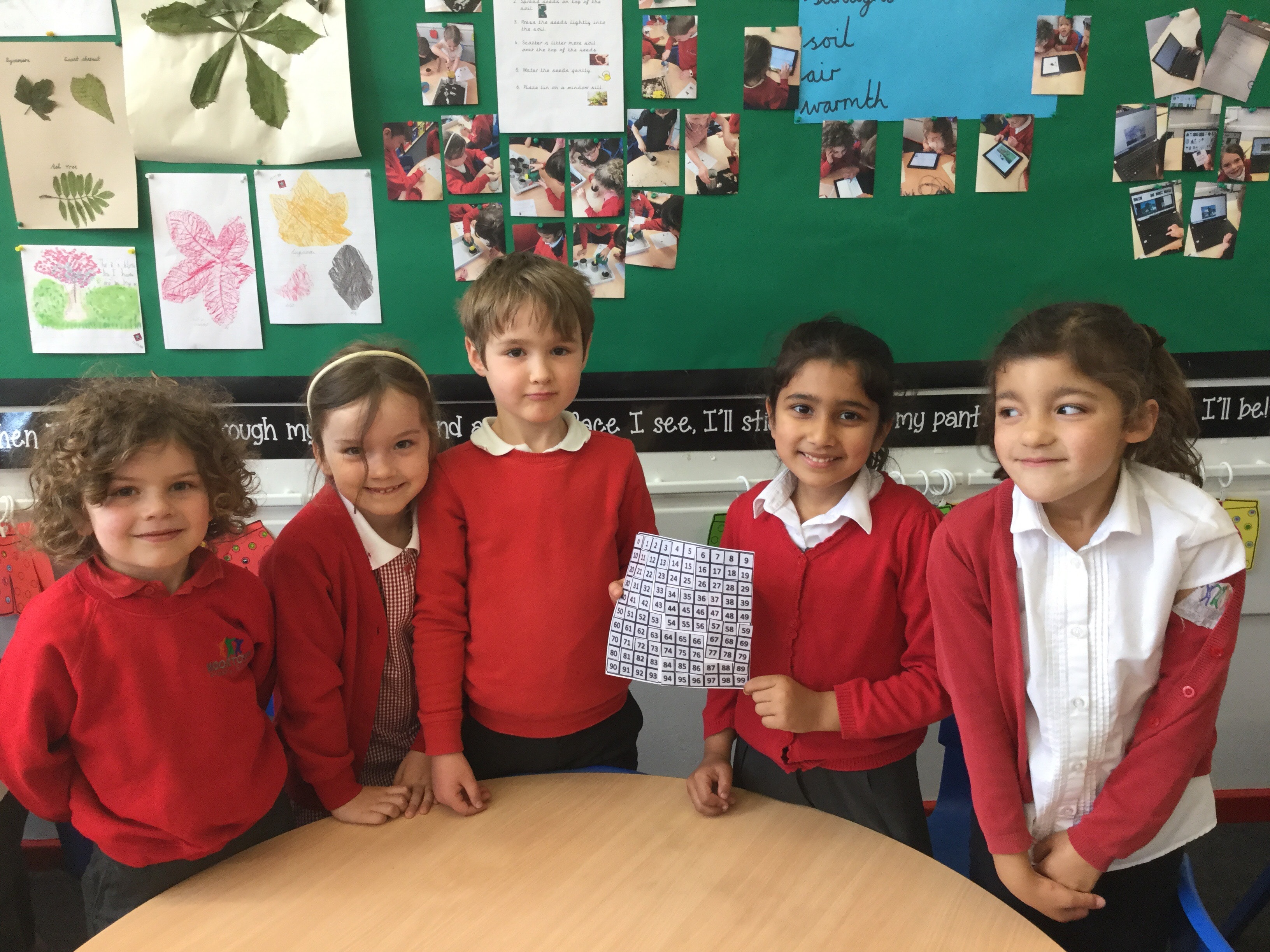
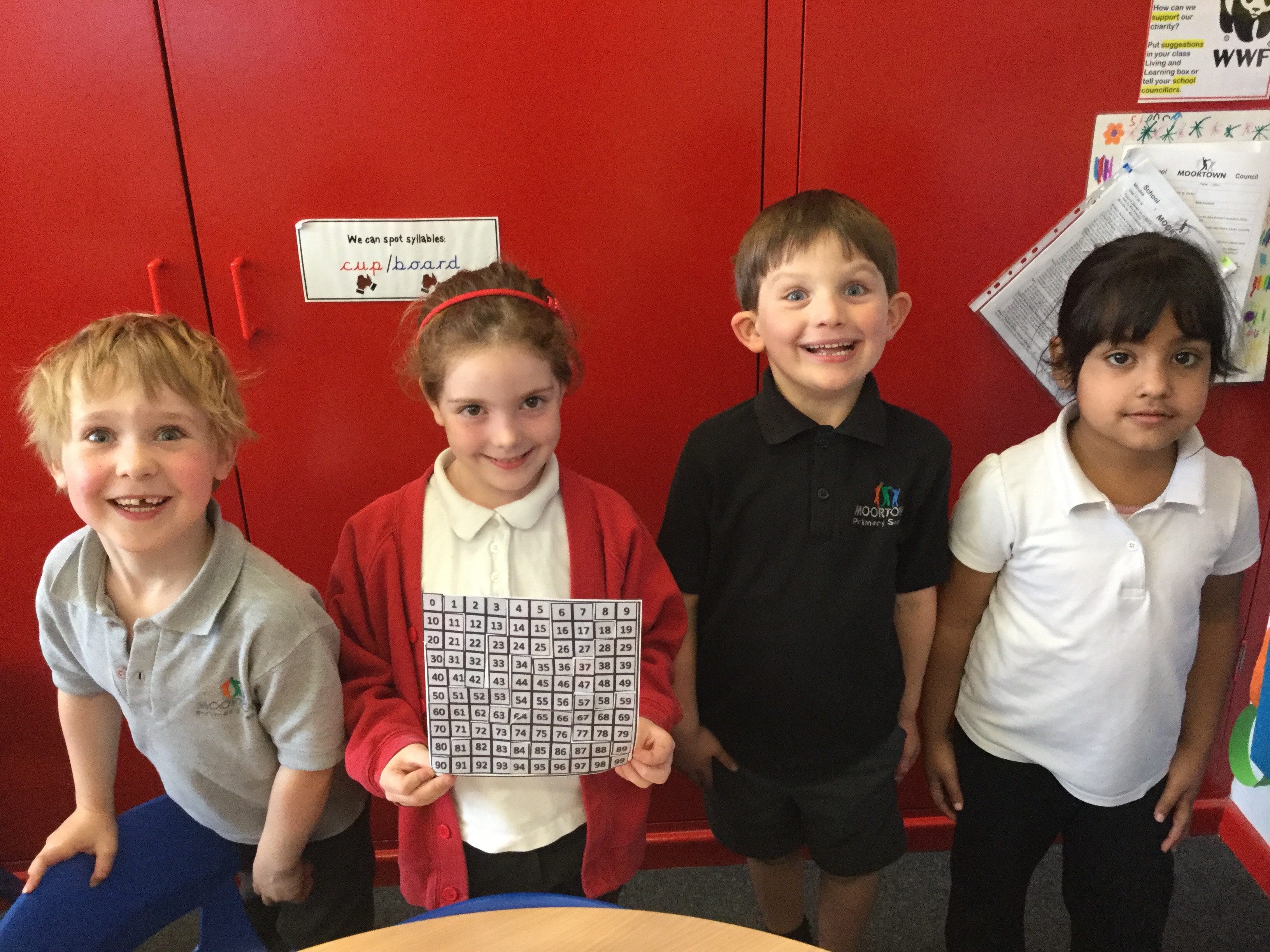
Plastic free under the sea
Did you know that plastic caps are among the top five most harmful ocean trash items? Marine mammals, birds and fish often see plastic bottle caps as food, with potentially fatal consequences.
Continuing on with our environment work, Year 4 have been researching the effects of plastic in the oceans.

Using some of the data below, the children will be creating graphs and charts to record these findings.
During a recent beach clean, 10,004 bottle caps were collected from the Dutch North Sea coastline.
- more than 80% came from beverage and food packaging
- the most common bottle cap colours that were found were blue and white (common colours for bottled water packaging)
- 80% of the bottle caps had no branding visible
- more than 70% were damaged, ranging from slight to severe damage, indicating that the bottle caps had been floating at sea for a long time

In addition to this, we are creating a large piece of artwork using only plastic bottle tops. The children have been asked to collect tops in various colours and add them to the display on a daily basis.
Below are some images of our creation in the early stages.



Living and Learning: Talk PANTS
The Talk PANTS campaign helps parents of 4-11 year-olds keep their children safe from abuse. Like the Green Cross Code, it takes a potentially tricky subject and gives parents and teachers the tools to talk about it in an engaging and age-appropriate way. 
Learning objectives
Children will be able to:
• understand and learn the PANTS rules
• name body parts and know which parts should be private
• know the difference between appropriate and inappropriate touch
• understand that they have the right to say “no” to unwanted touch
• start thinking about who they trust and who they can ask for help.
Having introduced the PANTS rules to the class, we then discussed the Talk PANTS poster and acrostic poem. Taking each sentence in turn, Year 4 took turns in explaining what they thought each letter of PANTS stands for. The children were encouraged to say the meanings out loud as a chant.
After a lengthy, mature discussion the children thought about the people in their life who they feel they could confide in and trust.
Finally, the class were given the opportunity to choose an appropriate learning objective for this lesson. Some of the children then had a go at writing their own acrostic poem.
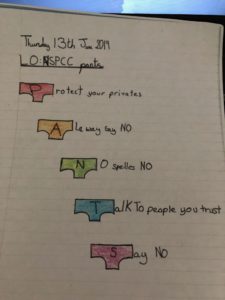
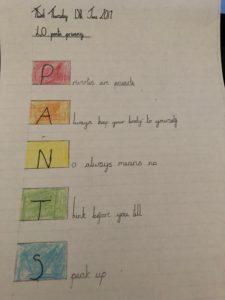
Sports day
This year’s sports day will take place on Thursday 04 July 2019, at Roundhegians Rugby Club. Access to Roundhegians will be off Chelwood Drive.
Key Stage 2 events will take place at 9.30am and Reception and Key Stage 1 at 1.30pm. Children will be walking to the field, escorted by adults. We will require additional adult helpers so please let the office know if you can help with this.
If weather conditions mean we have to change the date, the reserve date is Thursday 11 July.
The format of this year’s event will be competitive races and field events with children having the opportunity to compete for medals. However, all children will be rewarded for taking part.
Our teams will be: green, blue, white and red and your child/children will be told their team colour by their class teacher. If possible, please could your child wear a t-shirt to wear to match their team colour. Pupils may wear PE kit for the whole day.
As we are off site, please could you provide your child with a carrier bag to sit on. If you are coming to spectate, you are welcome to bring rugs or chairs to sit on.
Please could you ensure your child has their water bottle and a cap/hat at school; it would also be useful if you could apply sun cream before your child comes to school.
Normal lunch time and end of school collection arrangements will still apply on this day.
In the event of bad weather, updates will be sent via Twitter and posted on the website.
Your support is valued to make the event memorable and we hope you are able to come and cheer your child on at sports day.
Year 2 super skippers
A huge well done to all of Year 2 for their fantastic efforts at the skipping festival. All the children took part in either an individual, partner or group event and gave 100%. There were some great results too.

It’s been great to see their skills develop since our first session with Jodi from Skipping School. Well done to all the children.
‘It was fun because of all the skipping we did.’
‘It was great because we were getting active.’
‘I thought the skipping was good as we have got better at it.’
‘It was easy because we have been practising.’
‘The new skills, we learnt at the festival, were tricky but I am going to try and get better at them.’







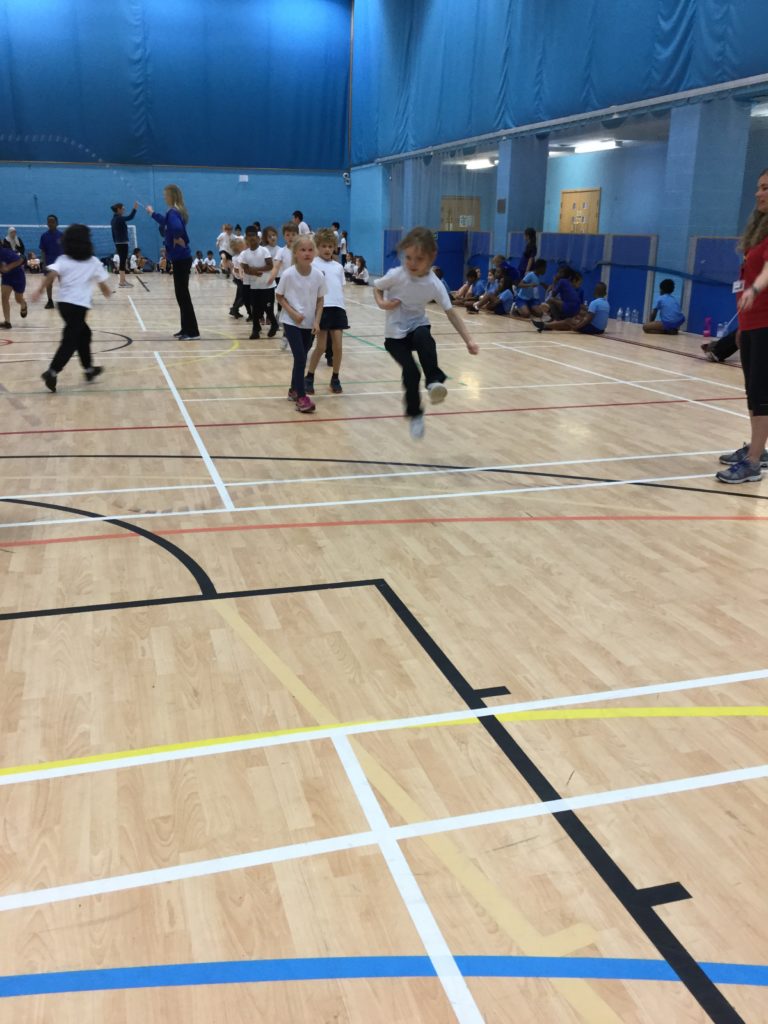





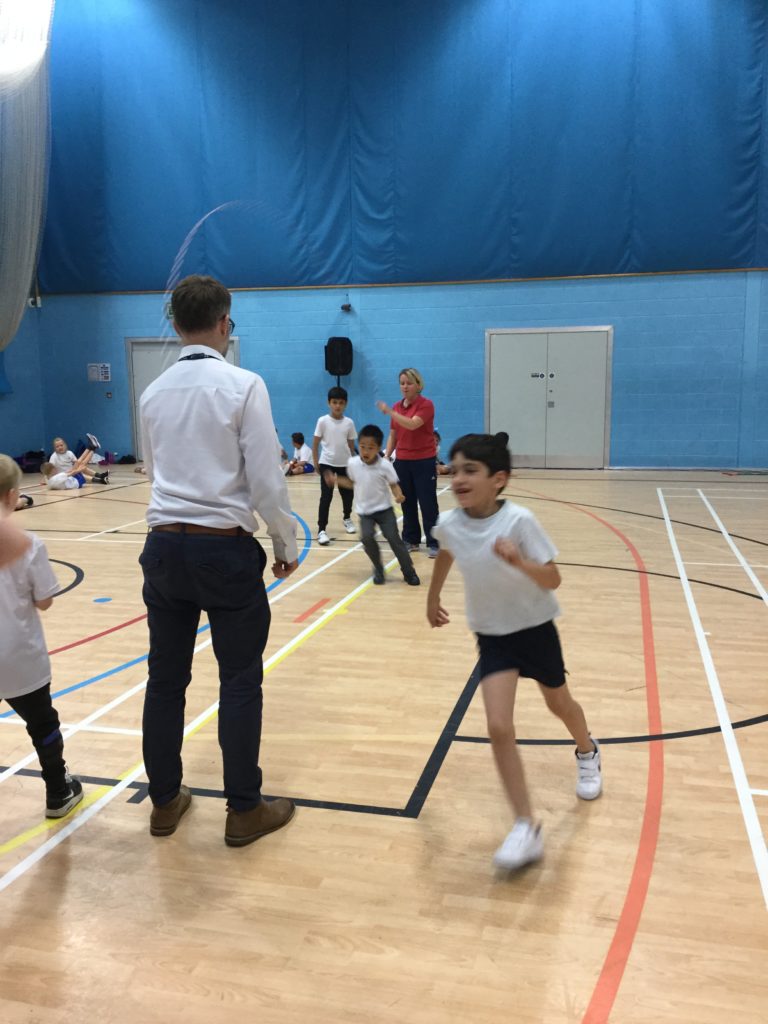



Developing pattern awareness
This week we have been busy making patterns. Spotting patterns is important for identifying many different kinds of mathematical relationships. Children find pattern activities engaging and enjoyable and once they begin to spot patterns they see them everywhere!
Encourage your child to make and spot patterns at home. They could make patterns with toys, sticks and leaves and engage in printing and sticking activities.
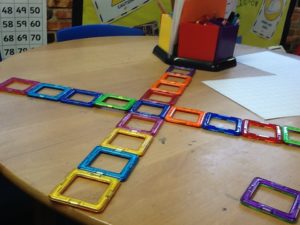
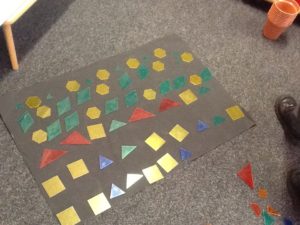
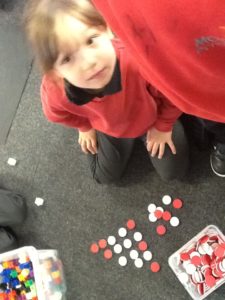
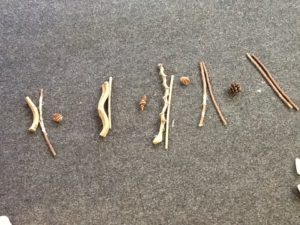
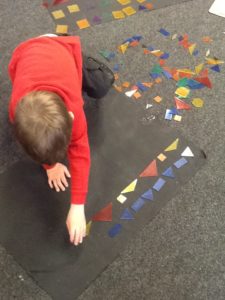
Moving on to secondary School: A road safety guide for parents and carers
Safer Roads Leeds have produced this useful guide to support Year 6 children and their parents/carers with their new journey to secondary school.
For many children, starting secondary school is the time when they experience travelling independently for the first time. You and your child should know when they have the skills and are ready to travel independently and safely, and it is a good idea to start to think about your child’s new journey with them well beforehand.
- Talk to them about how their feel about their new journey.
- If possible, do the journey with them before term starts.
- Is there a safer, quieter, more pleasant option?
- Think about potential hazards.
- Make sure they’ve got a list of family and friends’ telephone numbers in case of emergency.
- Keep a list of the names and numbers of your child’s friends.
Your child will travel to and from school around 400 times each year; the start of secondary school is the perfect time for your child to establish safe and sustainable travel habits that will stay with them for the rest of their life!
Part 1 Planning to walk
Walking to school is a brilliant to way for your child easily to get some exercise, develop independence and clear their head ready to concentrate. Once they start secondary school, your child is likely to be walking alone or with friends, and so they need some extra help to make sure they’ve got the skills to do so safely – especially if they’ve been driven or escorted to primary school.
Here’s how you can help:
- Plan a safe route with your child. Google maps is a great tool – you can drag the little ‘peg kid’ to explore at street level and find safe crossings.
- Will you pass the cymbal challenge? Watch the three short (and fun!) films about road safety that local schools made for transition students. Search ‘You Look… but do you see? Leeds City Council’ on YouTube. There’s an
audio challenge too. Use these to find out more about what your child knows (or not) about phones and roads. - What else do they think might help keep them safer? Discuss things such as thinking for themselves, choosing safe places to cross and not messing about near busy roads.
- Children who are late often take more risks – help your child get into the habit of getting their things ready the night before and leaving plenty of time to walk to school.
- Is there a roundabout or junction on the route? It isn’t always easy to know where cars will come from; make sure your child understands how cross safely. The same goes for crossing between parked cars. This extract from the highway code covers these and other important reminders
for pedestrians of all ages.
Remember, it only takes 15 – 20 minutes to walk a mile, and your child will enjoy all kinds of short-term and long-term benefits from walking to school.
Part 2 Planning to use public transport
Your child may not be used to travelling by public transport on their own, so there are a lot of things to consider. Even if they are, the journey to secondary school is likely to be a new one. Here’s how you can help:
- Find out whether your child knows how to find out about buses, how to hail and stop the bus safely, and how to wait until the bus has moved on before crossing the road. Could you practice this together?
- Discuss what they think it means to behave safely / dangerously on public transport.
- Children who are late take risks – help your child get into the habit of getting their things ready the night before (Travel pass? Money?) and leaving plenty of time to get to school.
- Go through some ‘what if’ scenarios. What if the bus is late? What could they do if friends are messing about on the bus? What if they leave something on the bus?
- Use Google maps too; you can drag the little ‘peg kid’ to see what the roads look like where the bus stops. If your child needs to cross the road, remind them to move to a safer crossing place (zebra, pelican etc.) or wait until the bus has moved on, and then find somewhere where they can see clearly.
If it’s too far for your child to walk or cycle to school, using public transport is a great next option.
Part 3 Planning to cycle
If your child is lucky enough for cycling to be an option, your support and encouragement are vital. Here’s how you can help.
- Make sure your child can cycle well enough for the road. Find out more from Cycle North.
- Look at Google Maps to find a local off-road route or quieter streets. The West Yorkshire Cycle map includes a journey planning tool and also highlights recommended routes across the city.
- Cycle the route together if you can.
- If your child’s route to school can’t avoid junctions or roundabouts, they can always get off and walk.
- Check that your child knows how to do a basic check to make sure their bike is in good working order; do the brakes work properly? Are the tyres pumped up? Does the bell work? It might be a good idea to have the bike checked in a proper bike shop every so often. Here’s a great video to show you and your child how to do a basic ‘M-check’ to make sure their bike is safe to ride. Help your child organise the right kit: helmet, fluorescent and reflective clothing, and a set of lights for winter.
Cycling isn’t just good for getting to school; your child may soon realise how easy it is to get about to all kinds of places by bike – they can even take their bike on some trains (link to info?)
Part 4 Planning to travel by car
Drivers have a huge part to play, particularly at a time when children may be unescorted for the first time, and perhaps be distracted by new phones, new friends, new routes, new timetables and new experiences – and all this when their brains still can’t accurately judge speed. Here’s how you can help:
- Inconsiderate school-gate parking generates the greatest number of school-transport related complaints we receive and creates danger for everyone.
- Crossing between parked cars is one of the biggest causes of child pedestrian casualties; talk to your child about how to do this safely if they must; better still, make sure you don’t create these conditions yourself.
- Remind your child about the importance of wearing seatbelts, whether you are with them or not. Most schools in Leeds now have 20mph speed limits, to help keep children safer.
- Could you consider car-sharing?
- Or perhaps drop your child off a bit further away, so that they, too, can reap the many benefits of walking part of the way? You could even drop them at a friend’s house or central meeting point so they can walk in together.
- Make sure your child knows how to get of the car and cross roads safely. They should always get out on the pavement side, not into the road.
So if your child has no other option but to travel by car, there’s a lot those who drive them can do to help keep everyone safe.
Cooking Halloumi Tikka Masala
As Year 6 will be moving into secondary school soon, they’ll be becoming more and more independent. To help with this, we’ll be cooking this term, practising a number of essential skills: bridge method, claw method, grating, mixing, frying, using the oven and food hygiene.
This week, half of the class made halloumi tikka masala and all of them thought it was delicious! Have a go at home too – we’ve sent the recipe home.

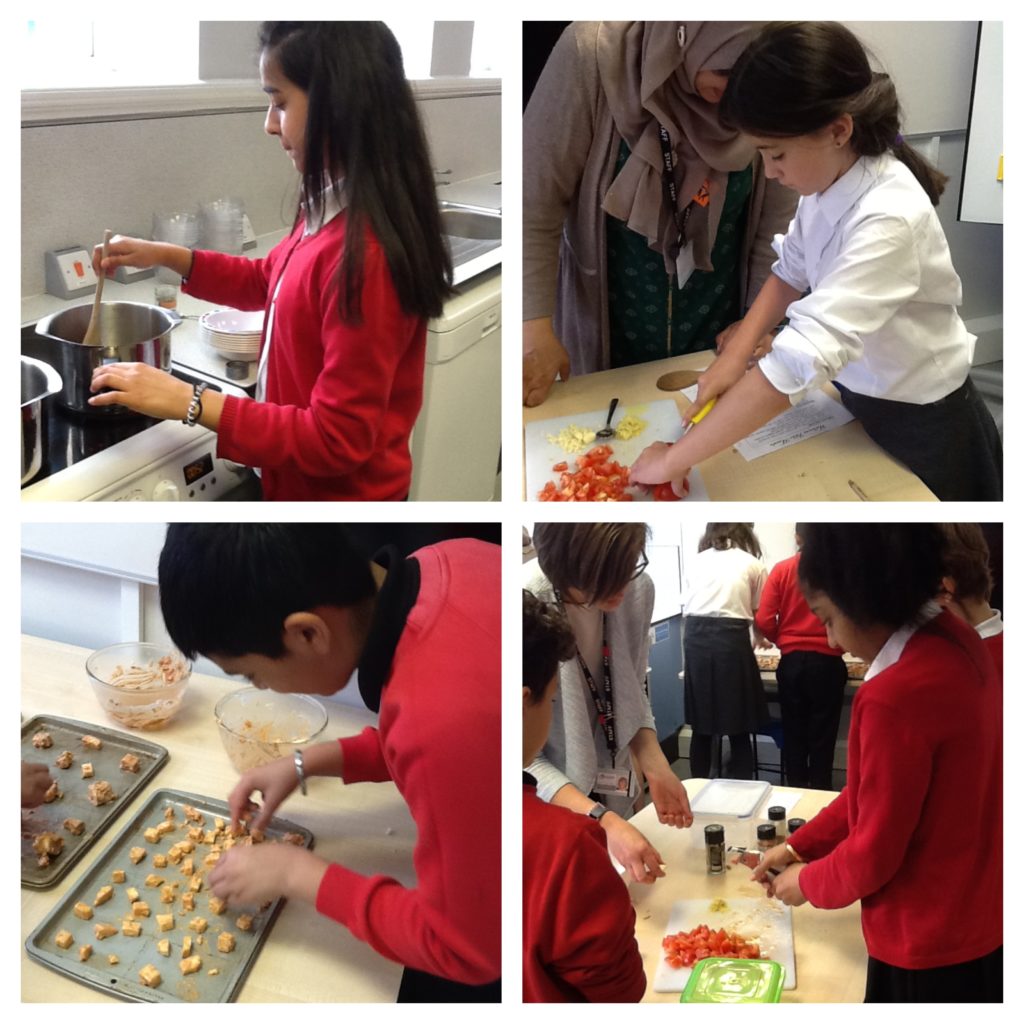
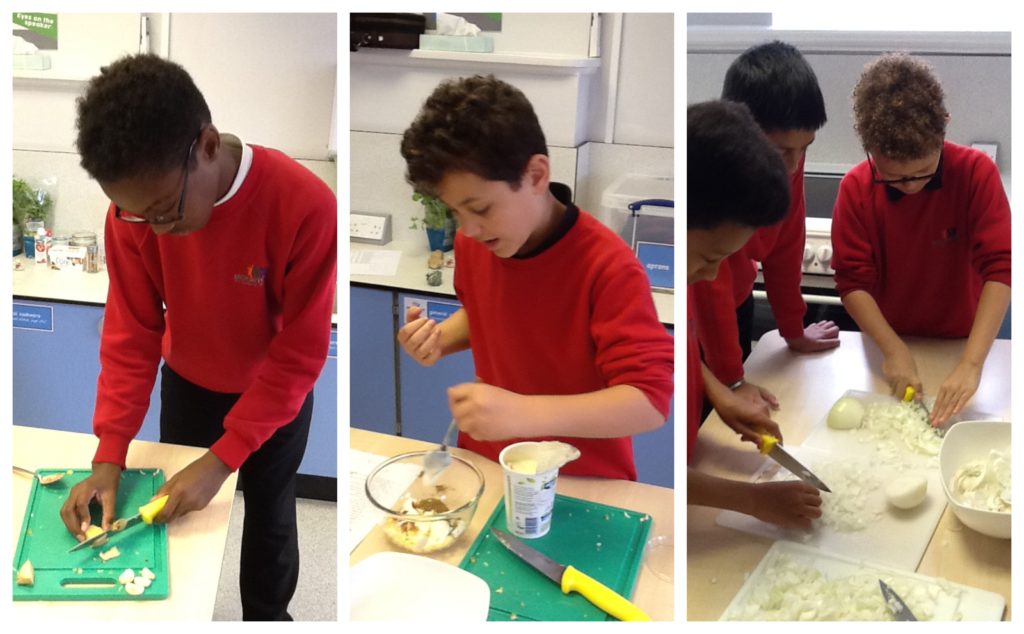
I can show a moral choice.
This week’s homework was Creative and we explored what a moral choice is. We had a great range of examples: choosing to tell the truth; paying people according to the ‘worth’ of their job; standing up to bullies; choices politicians have made; and many more.
Here are some the class nominated to be shown on our website:
Ethan created a comic strip about standing up to your friends making bad choices.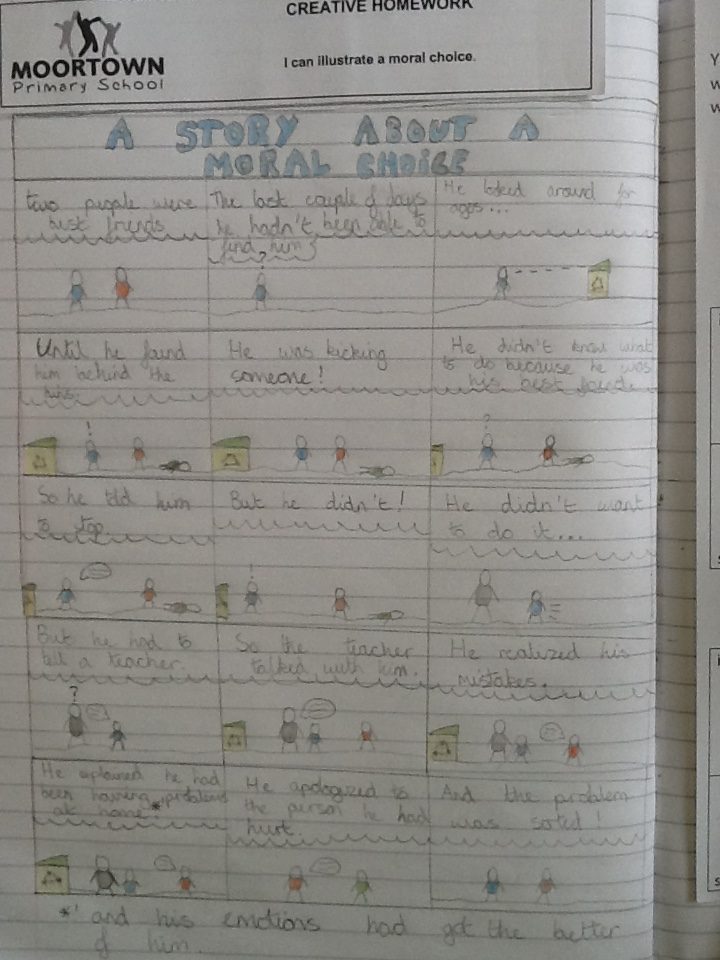
Isaac’s story was about the consequences of lying.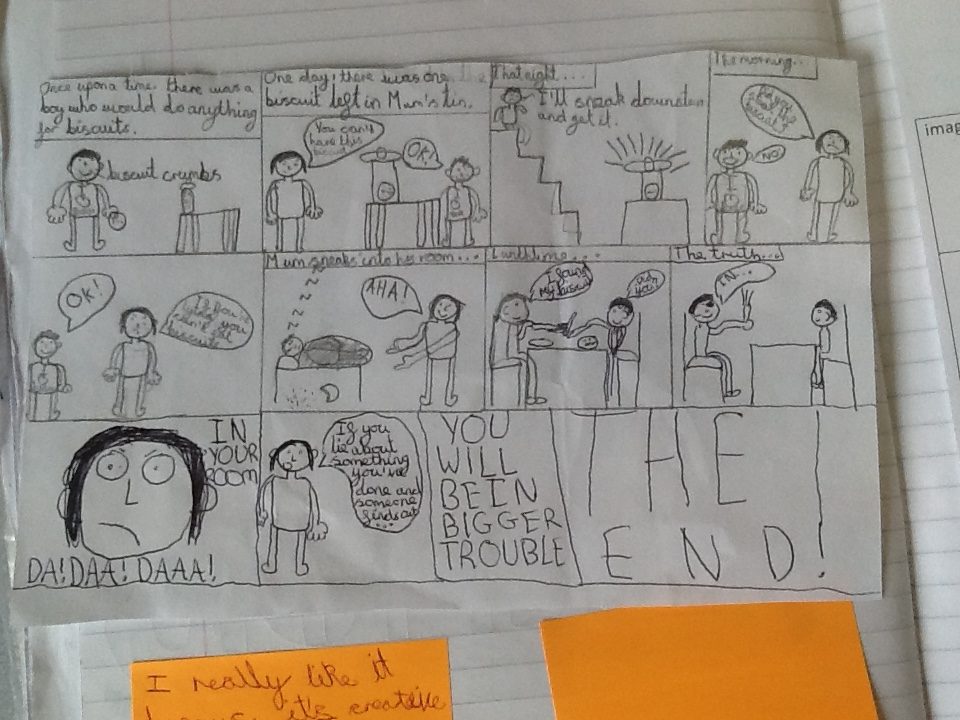
Isabella explored choices that are made which result in gender inequality.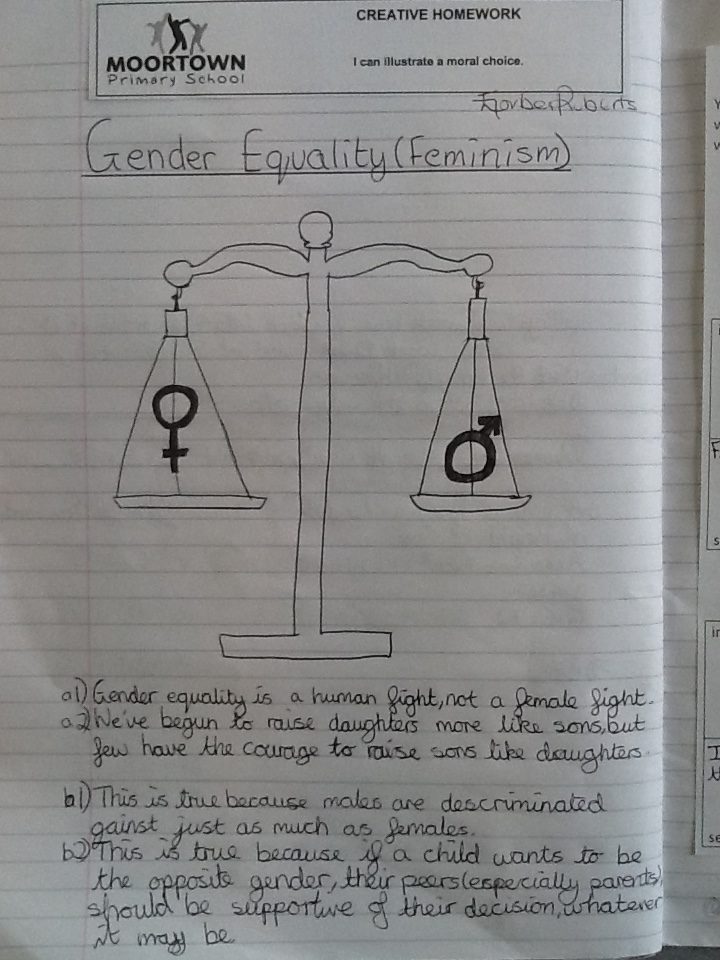
Ripley explored the difference in wages and whether they had been allocated morally.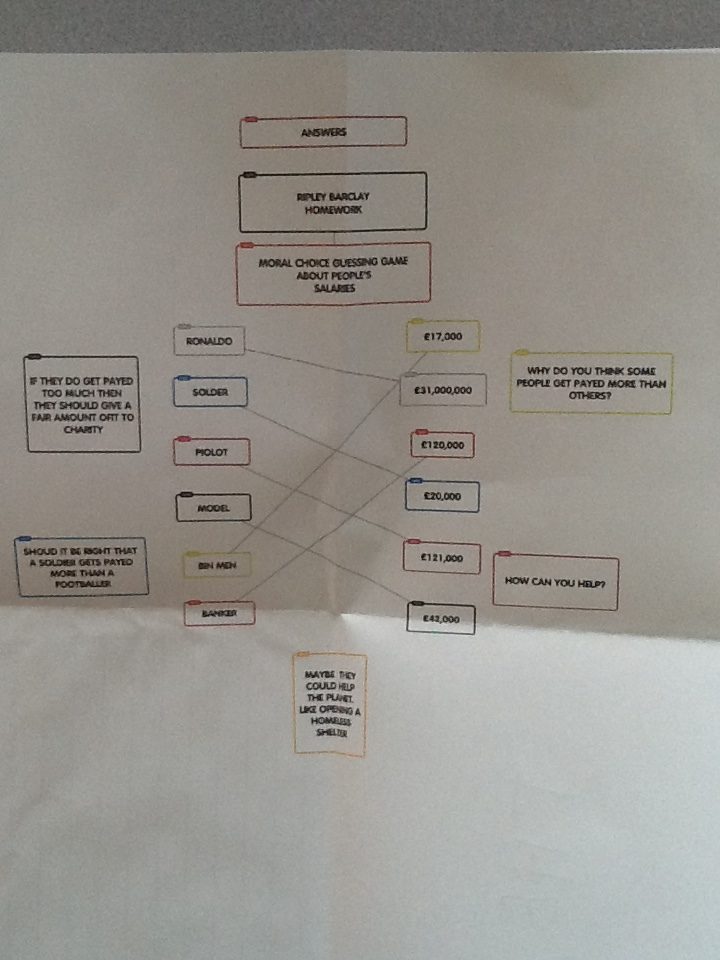
Amrit thought about choices Barak Obama made in his career as President.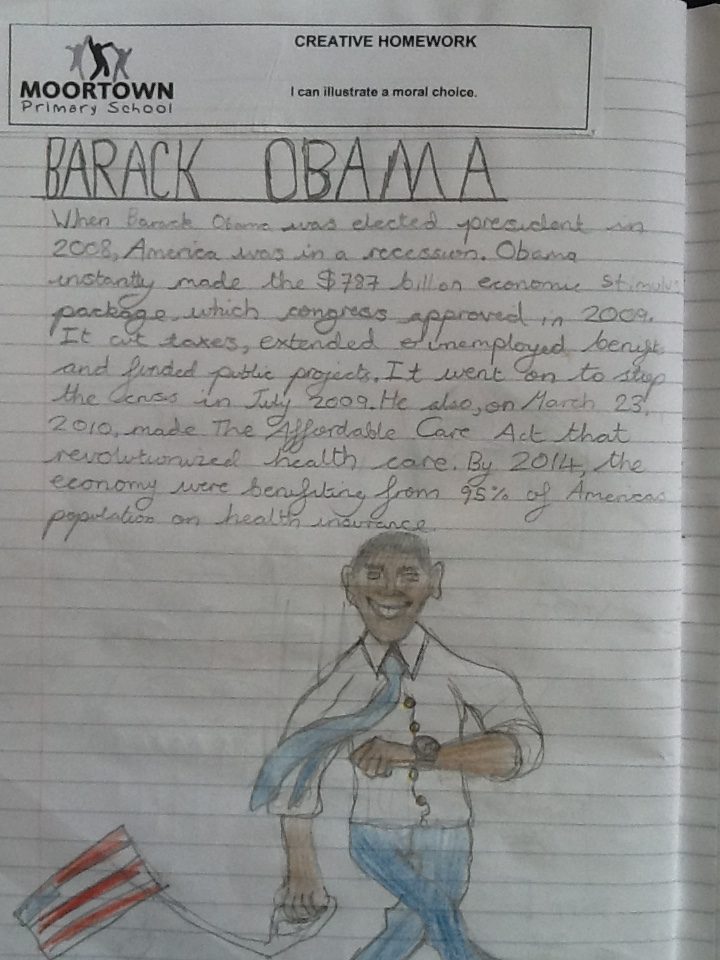
First News
Reading the newspaper is a great way to start the day!
Every Thursday, the children collect the paper as they come into class and settle down to read. Following this, we always share some of the articles that have been of particular interest. This week, we enjoyed articles about plastic pollution and ocean awareness. These linked well to our current studies about the environment.
